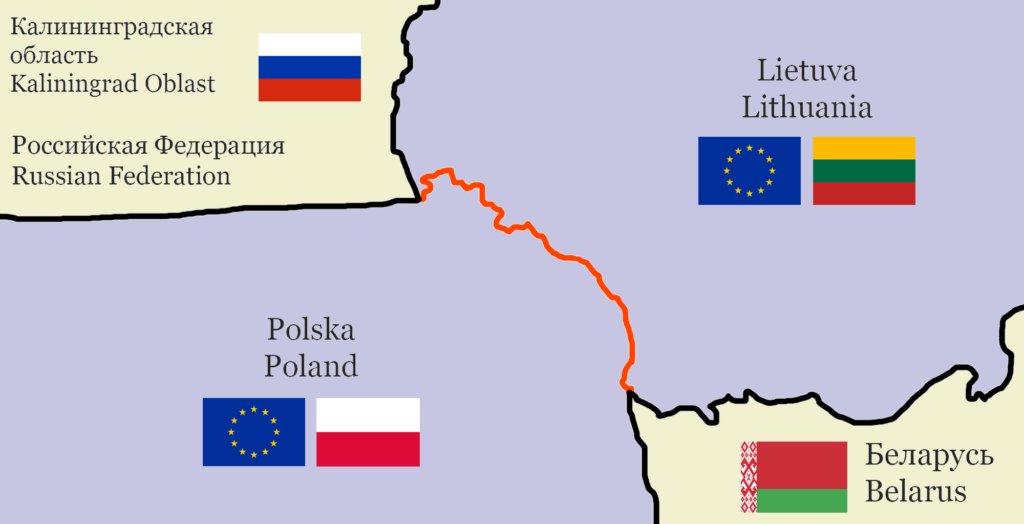Russian and Belarusian Military Movements and Their Implications
The Suwalki Gap: A Strategic Flashpoint in Eastern Europe
Russian and Belarusian Military Movements and Their Implications
The Importance of the Suwalki Gap
The Suwalki Gap, a narrow stretch of land between Poland and Lithuania, has become a critical geopolitical hotspot in Eastern Europe. Spanning just about 100 kilometers, it separates Russia’s Kaliningrad enclave from Belarus. This corridor is one of NATO’s most vulnerable areas because it forms the only land bridge between NATO allies in the Baltic region and the rest of Europe. If Russia and Belarus were to sever this link, the Baltic states—Estonia, Latvia, and Lithuania—could be cut off from their allies. Given the rising tensions in the region, the military preparations by Russia and Belarus around the Suwalki Gap demand close scrutiny.

Russian and Belarusian Preparations
Russia has consistently increased its military presence in Kaliningrad, one of the most heavily militarized areas in Europe. Kaliningrad hosts advanced missile systems, including Iskander ballistic missiles, which are capable of carrying nuclear warheads. This arsenal provides Russia with a strategic advantage, allowing it to project power deep into NATO territory.
Belarus, an increasingly close ally of Russia, has also played a crucial role in the Suwalki Gap equation. The joint military exercises between Russian and Belarusian forces have raised alarm bells across NATO. These drills simulate defensive and offensive operations, often positioning forces in areas close to the Polish and Lithuanian borders. One such operation, the Zapad military exercise, showcased Russia’s ability to deploy tens of thousands of troops rapidly, suggesting potential capabilities for cutting off the Suwalki Gap.
Recent satellite imagery and intelligence reports indicate that both Russian and Belarusian forces have bolstered their logistical and communication networks. This includes laying down military infrastructure that could support sustained operations in the region. While these actions are framed as defensive measures, the sheer scale of military buildup suggests that Moscow and Minsk are preparing for possible conflict scenarios.
NATO’s Response
NATO, fully aware of the strategic importance of the Suwalki Gap, has not remained passive. Since the 2014 annexation of Crimea, NATO has increased its presence in the Baltic region. Enhanced Forward Presence (EFP) battalions, stationed in Poland and the Baltic states, aim to act as a deterrent to any aggressive Russian moves. However, the disparity in troop numbers and capabilities between Russia and NATO in the region remains a concern.
The vulnerability of the Suwalki Gap continues to shape NATO’s defense posture. Military planners have proposed various strategies to defend this area, including rapid response forces, increased air defense systems, and better logistical support. Yet, the speed at which Russia and Belarus could launch an operation puts immense pressure on NATO to react swiftly.
Broader Geopolitical Context: AUKUS Deal and European Defense
The formation of new military alliances like AUKUS—an agreement between the US, UK, and Australia signed in 2021—adds another layer to global military dynamics. This deal, which led to Australia canceling its contract with France for 12 diesel-electric submarines in favor of nuclear-powered ones from the US and UK, reflects a broader shift in Western military strategy. As the US shifts more attention to the Indo-Pacific, Europe, and particularly Eastern Europe, must reckon with the implications of a potential resource and focus shift.
While AUKUS serves to counter China’s influence in the Pacific, the situation in the Suwalki Gap reminds NATO and Europe that the Russian threat on its borders is equally urgent. As Moscow and Minsk continue their military preparations, the question remains: Will NATO be ready to defend the Suwalki Gap if it is tested?




